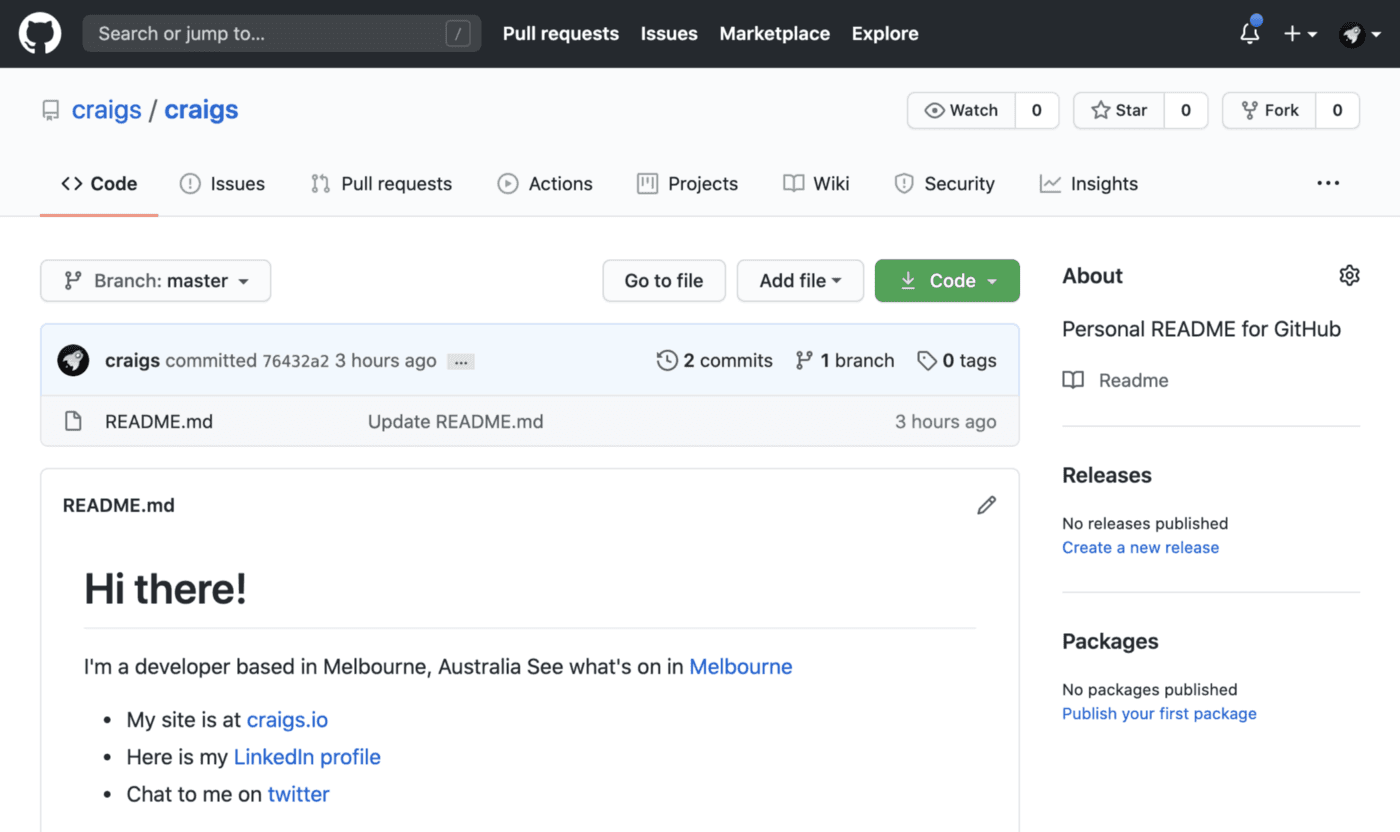Developer Branding Toolkit

Photo by Ant Rozetsky
Everyone loves being recognised for the effort that is needed to being the best that they can be. Being a developer is hard, requiring focussed effort to keep expanding our abilities.
Being good at our job is the first step. At some point in time, you will discover that the best superpower you can acquire is being a good communicator.
So let me help with some great tools to help you communicate with the world outside your team. Let's start building your brand and tell your story.
Acquire naming rights
I use a number of services. Most have the ability to set usernames or handles. You will find most common user names are taken.
I was happy with my handle at GitHub, @craigs. I then looked for a personal domain name and then tried to match that to available names at twitter.
GitHub: craigs
Domain name: craigs.io
Twitter: craigs_io
LinkedIn: craigs0
All starting to be a little consistent.
GitHub
GitHub is where I spend my days and it is also the easiest to update in order to provide some context about who you are and what you work on. People will definitely click on your profile and look to see if there is anything they can learn about you from there. So let's give them something.
Edit profile
Update your profile first and add links to everything you can. My description was super simple: “Developer”
Personal README.md
A personal README will allow you to create a markdown file for your GitHub account.

Adopt GitHub’s Personal README repository
Just create a repo with your username and initialise it with a README.md. This file will be presented in the overview section of your profile on GitHub.
Remember to link relevant words back to your personal site, social accounts and company.
Although Twitter has a bad reputation for being full of the worst parts of society, it is also home to the brightest and kindest parts of society. The developer community is strong on twitter and it's a great way to stay up to date.
Get on board and update your profile. Link to your personal site and be sure to update the description. You will want to keep the same tone of voice as in the GitHub description. It’s about you, make it reflect who you are.
Sure I just used the word “Developer” for me, but that is reflective of who I am. I am brief and self deprecating.
Right here, I would recommend starting by following all your team mates.
You already probably know about LinkedIn. Take the time to update your bio and skills. If you’re like me and hit the limit of skills on LinkedIn, tailor the skills you choose to list to match the projects that you enjoy working on. LinkedIn is a complete standalone subject, but when you start communicating, do not forget to post an update to LinkedIn.
Make a habit to connect with who work with, both at your organisation and those you come in to contact with. If you're up to it and need it, encourage people to write feedback for you. You have the opportunity to request edits and not display it if it's not what you expected.
Personal site
Setting up your own personal site will take longer to get configured. I open sourced my site for two reasons.
Firstly, it was great to allow others to take the source code and adapt it for their needs. It allowed me to teach Next.js, TypeScript and GraphQL. You will be able to run this site for $0. To me, it was important to achieve $0 as this prevented many junior developers from getting their own site up and running.
Secondly, by open sourcing your site, people who wish to work with you can examine the craftsmanship and decide if that is the sort of person that they would like to work with. Your dedication to improving your craft is the essential part of your personal brand. Do not be ashamed to show off the effort you put in to your work, we’re all on a journey.
Start your story
With these elements of your toolkit in place, you will be accessible with a consistent message about who you are and what you do.
The hard part? Start writing. Start tweeting. Start sharing.
I’m not talking about essays, although you can certainly do that. It is as simple as re-tweeting others, posting about new features in your project on LinkedIn or even logging a book you have read. This is your story and your story is your personal brand.
People will read over this and get a feeling for the great human that you are and will be happy to reach out to you.
I too am starting the public branding exercise and publishing ideas. I’ll be open and publish things I learn, both good and bad.